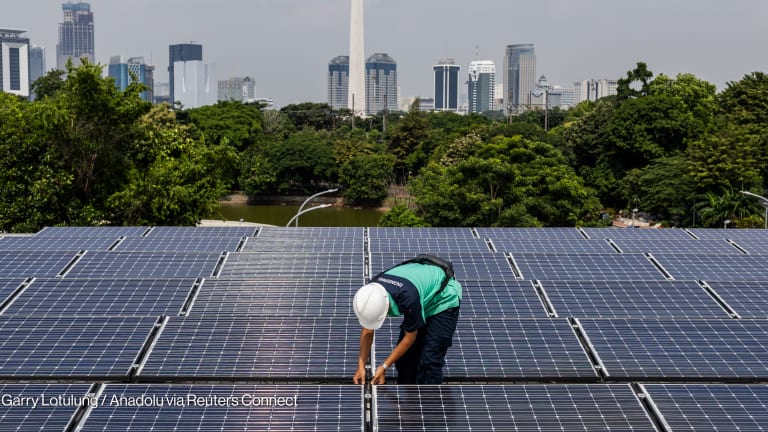
In an attempt to lead by example on energy sustainability, the Asian Development Bank has decided to power its headquarters in Manila fully with renewable energy from regular sources on the grid — a move that shows how serious the multilateral institution is about practicing what it preaches about sustainability.
ADB, which employs over 2,600 staff near one of the Philippine capital’s most congested throughways, has to pay each month a huge electricity bill to operate its 6.5-hectare compound in the middle of a pollution-ridden and energy-guzzling business district.
The announcement was made in the middle of the institution’s so-called No Impact Week, a series of events aimed at educating Filipinos on environmentally-friendly best practices in the workplace.
“As an institution, we are strongly committed to expanding the use of renewable energy across Asia and the Pacific, so it is only fitting that we walk the talk in our own headquarters,” Bruce Davis, the bank’s vice president for administration and corporate management, said in a speech, adding that renewable energy is the way to go not only for ADB but also for the whole region.
Geothermal, solar
Among the renewable energy sources that the bank will harness are solar (with photovoltaic panels installed on the roof of the compound’s two main buildings since 2010) and geothermal, following a supply agreement with local firm Aboitiz Power and its energy retail subsidiary AdventEnergy Inc.
Geothermal will comprise around 96 percent of the bank’s energy supply or about 1.5 million kW/h per month generated by power plants in Albay and Laguna provinces. Solar, on the other hand, will patch up the remaining shortfall with an average power generation of about 50,000 kW/h.
This 100 percent switch to renewable energy, according to Davis, will bring down the bank’s overall carbon footprint and boost its contribution to the fight against climate change and environmental protection while taking advantage of the Philippines’ recent energy reforms allowing large users to choose their own power supplier. The move is also in line with last year’s campaign to encourage employees to take public transportation to lessen pollution and save energy.
“This agreement will allow us to cut our annual corporate carbon footprint by nearly 50 percent, with an emission reduction of more than 9,500 tons of carbon dioxide equivalent,” the senior official said.
Viability of renewable energy
ADB’s commitment to renewable energy marks the institution’s strong emphasis on putting climate change and environmental preservation at the forefront of development agenda.
However, some concerns remain about the viability of renewable energy and its ability to satisfy global energy demand.
Devex previously reported that cost and reliability continue to hound the full integration of renewable energy sources into the global power mix. “Clean” sources, like solar with the panels and eolic with huge turbines, are considered relatively expensive — and unreliable because they depend on fluctuating variables like sunlight and wind. That’s why a good mix of traditional and renewable is seen as ideal, especially when scaled up.
“It is important to have a good generation mix … in order to have an optimal power system,” explained Chong Chi Nai, Southeast Asia energy director at ADB.
Read more development aid news online, and subscribe to The Development Newswire to receive top international development headlines from the world’s leading donors, news sources and opinion leaders — emailed to you FREE every business day.




